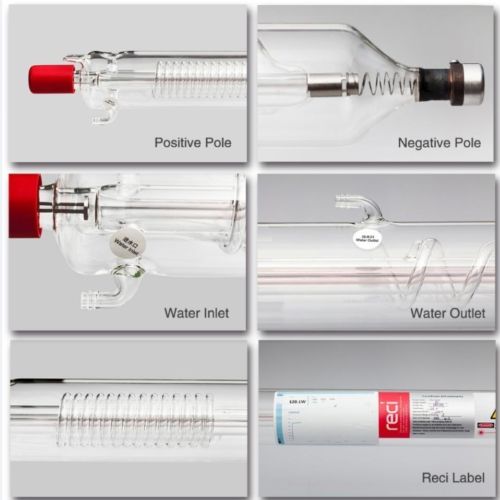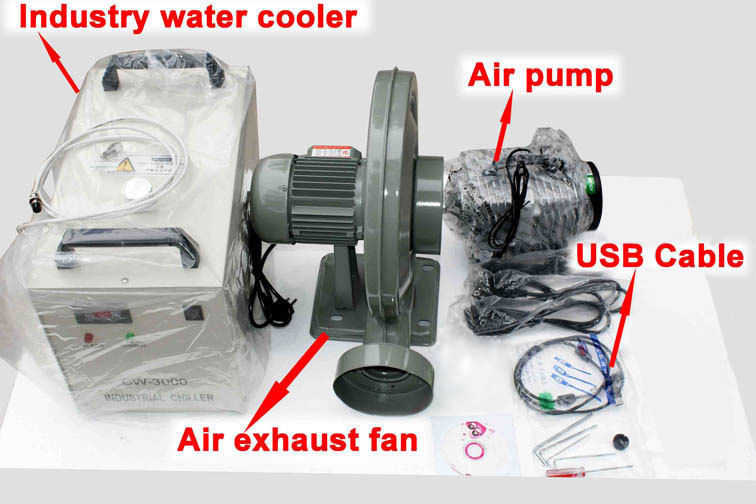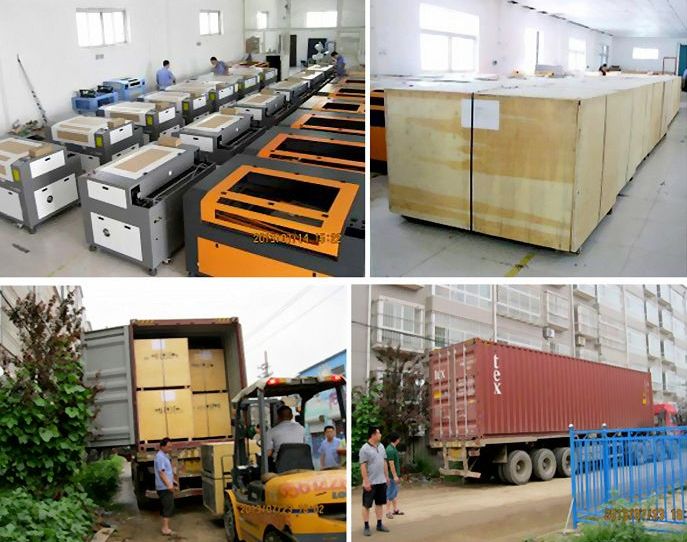I. Introduction With the increasing depletion easy to leaching of gold ore resources, the development of gold-containing arsenic is increasingly showing its importance. Arsenic-bearing gold mines are generally refractory ores, and the development and utilization of their resources is a worldwide problem. Arsenic pyrite (arsenopyrite), realgar orpiment and arsenic are the major gold arsenic minerals. Arsenic pyrite is one of the most common gold-bearing minerals, often surrounded by finely divided particulate gold. In this case, the ore does not completely disintegrate the gold particles even by ultrafine grinding. Therefore, the pretreatment process of arsenic-containing gold ore is one of the leading directions in the scientific research of gold extraction technology. The difficulty is that gold and the gods (the main component is arsenopyrite) and pyrite are very closely related. The fine particle state is encapsulated therein or is present between individual crystals of arsenopyrite or pyrite. When gold and toxic sand are symbiotic, a black or dark brown surface film is formed to cover the surface of the gold. The above phenomenon leads to a low recovery rate of gold in the gold extraction process. In order to improve the recovery rate, it is necessary to pretreat the ore to remove arsenic as much as possible. This is the key research direction in the gold mining industry. Second, roasting oxidation pretreatment The roasting oxidation method is a traditional process in the selection and smelting of non-ferrous metals, and is also the most versatile and reliable method for treating gold-bearing sulfide ore, especially carbonaceous sulfide ore. The purpose of calcination is to decompose the sulfides to expose the gold particles, to volatilize the sulfides of arsenic and antimony in an oxidized state, to burn or lose the activity of the carbonaceous materials; to relatively enrich the microscopic or submicroscopic fine-grained gold, so as to The next step of cyanide leaching gold provides good dynamic conditions. Calcination is a multi-phase chemical reaction process. The main influencing factors are temperature, physicochemical properties of reactants and products (particle size, porosity, chemical composition, etc.), gas flow characteristics, and oxygen concentration in the gas phase. The choice of temperature and the control of the conditions are particularly important, so the calcination method is very sensitive to the operating parameters and feed ingredients, often causing over- or under-burning, so that the leaching rate of the calcine is not high. The traditional roasting process releases a large amount of toxic gases such as SO2 and As2O3 during the roasting process, which seriously pollutes the environment; the dust collecting and purifying device of the furnace gas is complicated and the operating cost is high. However, the roasting method is simple and reliable, and the advantages of the elements such as S and As can be comprehensively recovered. In order to solve the defects of under-burning, over-burning and environmental pollution, scientists and technicians have been researching and exploring for many years to continuously improve and develop the roasting process and equipment. In terms of equipment, from single-furnace furnaces to multi-hearth furnaces, from fixed bed to fluidized boiling roasting. Kunming University of Science and Technology Mining Engineering Gold Research Group has developed a multi-stage temperature control and granulation internal thermal roasting system, which has achieved good results; in terms of process, it has been developed from one section to two or more stages of roasting, from air to oxygen-rich roasting. In addition, on the basis of the traditional process, the method of adding salt and sulfur and arsenic roasting has been developed to solve the problem of environmental pollution caused by the escape of sulfur and arsenic oxides, and to reduce the exhaust gas purification and dust removal burden. Oxidation and sulphation roasting, reduction roasting, oxidative roasting and salt roasting are some of the new roasting processes developed on the basis of conventional roasting methods in recent years. In addition to some of the characteristics of the traditional roasting process, these methods have their own characteristics. Oxidation and sulphation roasting are widely used to treat sulfides such as Fe, Cu, Cu-Ni, Co, Mn, Zn, Sb, etc., and convert heavy metals into easily soluble metal oxides or sulfates, making iron into insoluble oxidation. Iron causes the carbonaceous matter to burn As, Sb, Se, and Pb to volatilize as gaseous oxides. The extraction rate of the calcined gold is greatly improved. Salt-added roasting is a technology developed for the problem of high environmental pollution caused by the traditional roasting process of gold ore with high S and As, and the burden of purification of exhaust gas is heavy. The appropriate amount of inorganic salt is mixed and calcined in the calcined material to achieve curing. For the purpose of As, the commonly used salts are Na2CO3/NaHCO3 and calcium salts (CaCl2, Ca(OH)2). Although oxidative roasting is a mature industrial method, and the effect of de-As is better, the calcination process produces As2O3 and SO2 (it is difficult to produce sulfuric acid when As2O3 is contained), causing serious environmental pollution. Moreover, the calcination also produces non-volatile arsenate and arsenide, so that As cannot be completely removed. Au is encapsulated by fusible Fe and As compounds, and high recovery is not achieved when cyanide-containing Fe-containing calcine. To dissolve the passivation film, alkaline or acid leaching is required, followed by grinding and floating. Select additional jobs. Although the recovery rate of Au can be improved by the oxidizing roasting method, it is difficult to achieve industrially. It can be seen that the law will be replaced by other methods in the near future. Third, wet chemical pretreatment (1) Atmospheric pressure alkaline leaching pretreatment The atmospheric pressure alkaline leaching pretreatment is to oxidize and treat the relevant components of the ore by adding a chemical reagent under normal pressure, and the medium is alkaline. The experimental study on the pretreatment of a arsenic-containing gold concentrate with normal temperature and atmospheric pressure enhanced alkali leaching. The polymetallic minerals in the gold concentrate are mainly composed of metal sulfides, mainly pyrite, arsenopyrite and orthopedic Arsenic ore. The experiment adopts the physical and chemical comprehensive separation method, and uses the edge grinding and immersion process. The main equipment adopts a tower type immersion machine to superfinely grind the arsenic-containing gold concentrate, and then uses the strengthening pretreatment stirring tank at normal temperature and normal pressure. Strengthen the alkali leaching pretreatment to remove arsenic, desulfurization or fully dissociate gold and sulfide, and then carry out cyanidation immersion gold to achieve high-efficiency gold extraction. The method has the advantages of environmental protection, simple process, short process and small investment. (2) Atmospheric pressure acid treatment Atmospheric pressure acid treatment usually involves oxidizing the refractory ore with only monosulfuric acid. Peroxymonosulfuric acid is an oxidizing agent that is more oxidizing than H2O2 and is stable at lower pH. Peroxymonosulfuric acid is obtained by adding H2O2 to concentrated sulfuric acid: H2O2+H2SO4 (concentrated) = H2SO5 + H2O Oxidized sulfuric acid can oxidize sulfide ore and has better oxidation effect on arsenopyrite. Lakshaanan (according to GV Weert, 1988) has reported the use of monosulfuric acid to achieve similar oxidation of aqueous phase. Compared with the conventional roasting and pressurized oxidation methods, the processing cost is lower, however, the method has not been industrially applied. (3) Wet chlorination Water is used for direct chlorination of gold-containing carbonaceous gold mine, the gold extraction except that the pretreatment agent is not used chlorine, but hypochlorite, high chloride, ferric chloride and copper salts, and Sodium and so on. High-priced iron and copper salts are ideal oxidants for the pre-leaching of a range of sulfide minerals. Tests showed that high ferric sulfide leaching from hard to easy for sequentially: molybdenite, pyrite, pentlandite, Hui diamond mine, sphalerite, galena, chalcocite, pyrrhotite The order of high-priced copper salt leaching sulfides from difficult to easy is: pyrite, chalcopyrite, galena, sphalerite, chalcopyrite. By the decomposition of the sulfide, the encapsulated gold particles can be released, thereby facilitating cyanide leaching. (4) HNO3 decomposition method The use of HNO3 arsenic pyrite can fully decompose the sulfide in the raw material, thereby enriching Au in a multiplication, which is advantageous for the recovery of Au. In the former Soviet Union, arsenic gold ore was treated with HNO3, and As and S were oxidized to arsenious acid and sulfuric acid, so as to achieve the purpose of fully dissociating the gold, and the recovery rate of leaching residue cyanide was >95%. The acid consumption of the method is 0.18-0.6t, but the oxygen or air can accelerate the oxidation process, and the HNO3 consumption is reduced by 1/2 to 1/3. The former Soviet Union Bayikov Metallurgical Institute used 5% to 10% HNO3 at 75-85 ° C and a solid-liquid ratio of 1:7.5 at atmospheric pressure to treat Au pyrite and arsenopyrite for 1 hour. Oxygen or air is introduced, Fe98%, As97% and S92% are dissolved in the solution, Au is left in the slag, the recovery rate of oxidative gold extraction is up to 94% to 96%, and the KCN consumption is 3-4 kg/t concentrate. The toxic nitrous oxide gas produced by the process returns to the operation after absorbing and regenerating HNO3. Guangdong Nonferrous Metals Institute used this method to treat the acid consumption of 939kg/t in the Karamay gold mine in Xinjiang. It can be seen from some indexes of oxidative decomposition of HNO3 that the leaching rate of Au after treatment by this method is as high as 95% or more. However, the Achilles heel of the law is that the acid consumption is too large. Although the consumption of HNO3 can be reduced by pressurized oxygen leaching, it still needs 0.1-0.3t per ton of ore. HNO3 needs to be distilled and regenerated at 350 ° C, which is difficult to achieve in the industry, and As is not only not used, but also needs to be cured. It is considered that the method is extremely unlikely to be applied in industry, unless the grade of Au is very high. Otherwise it is not economical. (5) Hot pressing chemical pretreatment It is well known that hot pressure oxygen leaching in a closed vessel increases the reaction rate and reaches the end of the reaction in a relatively short period of time. The hot-pressure oxygen leaching for pretreatment of refractory ore can increase the cyanidation rate of gold and reduce the cyanide consumption. The disadvantage is that the equipment has high requirements for pressure and corrosion resistance, and the initial investment and production cost are high. The hot-pressure oxidation method is mainly used for pretreatment of sulfide ore and arsenopyrite, and is classified into hot-pressure oxyacid leaching and alkali leaching depending on the medium environment. Hot pressed oxyacid leaching can be used for pretreatment of sphalerite, chalcopyrite, galena, copper-zinc sulfide ore, nickel- cobalt sulfide ore, gold-bearing iron ore and arsenic pyrite; hot-pressure oxygen alkali leaching mainly refers to Hot pressed oxygen ammonia leaching, the principle is that some metal cations can form a soluble complex with ammonia, and a large amount of S is oxidized SO42- under the conditions of hot oxygen pressure. Fourth, bacterial oxidation pretreatment The study of bacterial pre-oxidation is quite active. As early as the 1960s, the former Soviet Union discovered a new dissolved autotrophic Thiobacillus ferrooxidans in the process of bacterial leaching of arsenic gold ore, using this arsenic-tolerant bacteria to decompose arsenic yellow. Iron ore and pyrite can be used to disintegrate Au, and the mechanism of action is exactly the same as that of pressurized oxidation. The bacteria play a role in catalytic oxidation. Under the action of bacteria, the decomposition and oxidation process of many minerals can be accelerated by dozens of times, even hundreds of times. After immersion for 60 to 120 hours, the oxidation rate of the arsenopyrite can reach 80% to 90%; when the cyanide treatment is carried out on the leaching residue, the small test results show that the gold leaching rate increases by 30% to 50% during cyanidation after biooxidation. . Bacterial leaching is generally carried out at a normal pressure of 25 to 35 ° C, and oxygen is supplied to the slurry with compressed air and stirred to strengthen the reaction process. Bacterial oxidation and gold extraction operations can be roughly divided into: 1, bacterial culture medium culture of Thiobacillus ferrooxidans, preparation of pH 1.5 ~ 2.5 sulfuric acid bacteria infusion; 2, bacterial catalytic oxidation to remove arsenic, sulfur; 3, pretreatment The slag is further cyanated (or by other methods), and the gold extraction pretreatment solution is activated by bacteria and reused. The Institute of Microbiology, Chinese Academy of Sciences has also worked on bacterial oxidation for many years. In 1980, the arsenic removal of arsenic gold concentrate was carried out at the Shangling Gold Mine in Pingguo, Guangxi. The concentrate contained As<6%, solid-liquid ratio 1:5, temperature 30-35 °C, pH 1.5-2.5, number of bacteria. >1085 / mL, stirring for 5 to 6 days and nights (or multi-stage leaching), leaching residue with HCl washing, arsenic removal rate of about 90%, Au recovery rate > 90%. Later, similar research was carried out in the Karamay gold mine in Xinjiang, and good results were achieved. In recent years, people have made gratifying progress in a series of studies on bacterial optimization, culture and genetic reproduction, and the decomposition of arsenic gold. It can be seen from the principle and process of the bacterial oxidation method that the method has the unique advantages of simple equipment and low reagent consumption, but also has the disadvantages that the cycle is too long, and valuable elements such as As are not recovered. V. Other pretreatment techniques (1) Vacuum dearsenization method. The method is based on the fact that under the vacuum condition, the product As formed during the thermal decomposition of arsenic pyrite has a large vapor pressure and volatilization, and is an effective method for removing As from arsenic gold ore under vacuum conditions. In the presence of pyrite, the sulfide or metal As formed by S and As precipitated during heating can be deposited by a condenser, and the excluded gas does not need to be specifically purified. (2) Volatile smelting method. The method is relatively thorough, with good technical and economic indicators and large processing capacity, and can handle various intermediate products of the smelter. China's Xiangxi gold mine for the smelting of gold-bearing sulphide ore, using low-column blast furnace volatile smelting and re-electrolysis gold separation process, Au and Sb recovery rate of about 95% and 93%, respectively, and comprehensive recovery of Pb, Cu, Metals such as Ni and Fe. The smelting processing fee per 100g of gold is only about 30 yuan. However, there is a problem that the method contains high Au in the smoke, and the pollution caused by the smoke is also serious. (3) Separation roasting method. The concentrate is subjected to dead burning and thoroughly desulfurized and arsenic, and the high-concentration flue gas generated is separately treated. The produced hot calcined sand is blended with a certain amount of reducing agent and chlorinating agent for separation, and the isolated product is subjected to beneficiation to obtain a high-grade concentrate. Conclusion The increasing attention of high-arsenic gold ore pretreatment technology is an inevitable trend of gold development, and has received extensive attention from the mineral processing industry, and has made certain progress. However, the characteristics of arsenic-containing refractory gold resources are diverse, and the research of pretreatment technology needs further research and development. While independently developing new technologies and new processes, it is necessary to increase investment in scientific research, and continue to learn from advanced technologies at home and abroad, and use its experience to make the pretreatment technology of arsenic-containing refractory gold ore resources reach the leap-forward development of industrial utilization.
Overview of the UTECH CO2 Laser Cutter
Product Description:
Advertisement, gift, shoes, toys, computers, garments, model cutting, building, packaging, paper industry, etc.
Advantages of UTECH Laser Cutting Machine:
Package:
<
Laser Cutting Machine Laser Cutting Machine,Laser Cutter,Mini Laser Cutting Machine,Co2 Laser Cutting Machine Shandong U-May CNC Technology Co., Ltd. , https://www.sesamecnc.com
Applicable materials:
Rubber, Marble, granite, jeans, fabric, acrylic, MDF, wood, bamboo, organic glass, crystal, plastic, garments, paper, leather, rubber, ceramic, glass and other non-metal materials, etc.
Applicable industries:



1. Ball screw transmission
Compared with belt transmission , high precision with fast speed.
2. Stepper motor and river
Standard machine equipped with stepper motor and driver, also can choose hybrid or other servo motor and driver.
3. Ruida 6332M control system Controller
1) Original new version Ruida 6332M control system, support DSP control.
2) High speed USB data transmission interface, download speed is up to 500kb/s
3) The control panel has 12 language for optional,such as Chinese,English,French, Portuguese, Spanish, Russian, German, Korean,Japanese and so on.
4) It supports multiple graphic formats, such as PLT / DXF / BMP / JPG / GIF / PGN / TIF and so on.
5) This machine is equipped with Control System for CorelDraw/AutoCAD and other advance software.
6) Very easy-operating control board and you can also see the engraving path from the control board.
4. Professional Laser headJust one year time,we have improve the laser head three times ,many factory is still use the first
or second one.
At present the latest generation is the most perfect of laser head, compared to the previous two generations, it has many advantages ,such as higher precision, better stability,more convenient to adjust.
And it is also the most popular design for customers.
5. Co2 Laser Tube ( Original Reci laser tube , Best brand in china )
Using life :8000-10000 hours
Global Warranty 12 months
6. Bracket of co2 laser tube
We not only use the best brand laser tube, in order to make the laser tube to play the best results ,for the auxiliary components ,we have also made constantly improvements, such as laser tube bracket, lens bracket, etc.
7. Laser supplier matched with the laser tube
Laser power supplier installed Independent , compared with the general install together with other Electrical Equipment, it can reduce interference of other
Electrical Equipment this can ensure the better performance of the laser power.
8. 550W exhaust fan
9. Water pump or Water chiller CW3000/5000/5200
To Cool Laser tube and Longer the lifetime of Laser tube.
Supporting upgradation to CW6000 with extra payment.


Every machine is packed with great care and tough material.
It is packed with cling films first and then film bags.
At last, it is packed with wooden case which is reinforced with the iron bar on the top and bottom.
With this kind machine, all our Laser Machine can protect well during long trip by sea or by train.
We can transport machine by boat or by training, according to your requirement.

Model
UTECH Laser cutting machine
Working area
1300*900mm/1300mmx2500mm, etc
Laser Types
Seal CO2 LaserTube
Laser power
130W/150W/180W/260W
Engraving speed
100-600mm/s
Cutting speed
0-30mm/s
Location precision
≤0.01mm
Resetting positioning accuracy
0.01mm
Power supply
AC110- 220V/50-60HZ
Controlling software
RDCAM
Operating temperature
0 - 45°
Operating humidity
5-95%
Minimum shaping character
English 1 x 1mm
360°slope engrave
Yes
Driving system
Stepper
Cooling mode
Water-cooling and protection system
Auxiliary Devices
Exhauster and the Exhaust Pipe
Software
RDCAM V6.0
Graphic format supported
BMP, CIF, JPEG, TGA, TIFF, PLT, AI, DXF, DWG,etc
Optional
Atuomatic feeding system, rotary axis, auto-focus